The efficacy of Facebook fundraising tools for nonprofit crowdfunding remains a controversial topic. Can the world’s biggest social network really be leveraged to raise significant amounts of money for causes, especially smaller organizations?
All evidence points to a resounding yes (with some caveats) – Facebook has created a suite of useful tools for nonprofits to collect tax-deductible donations on the site, through the two-tap “Donate” button on Page posts, ads, cover images, and Facebook Live streams. If your nonprofit is registered with Facebook Payments, your supporters can give to you in just two taps – an incredibly seamless and easy way to donate without leaving Facebook.
But one of the most powerful tools in the Facebook fundraising toolbox is the Facebook Fundraiser. Facebook Fundraisers empower individual Facebook users to choose a cause to support, and then solicit donations from their personal networks of friends, family, and colleagues.
Facebook Fundraisers look a lot like a GoFundMe or Kickstarter page, with the personal story of the person raising money front and center, a progress bar showing how much has been raised towards the goal, a list of donors, and the ability to provide updates on the campaign to those interested.
With this option, anyone on Facebook can start raising money for just about anything they care about, in just a few seconds. And now Facebook’s releasing some new updates.
The Latest Announcement
Based on the popularity and ubiquity of personal Facebook Fundraisers (and perhaps in response to the recent slew of bad press), Facebook wants to bring the conversation back to how they’re doing good in the world.
If you’ve logged in recently, you’ve likely seen some of the various ways that Facebook is pushing its users to start fundraisers of their own, or to donate to fundraisers started by their friends:

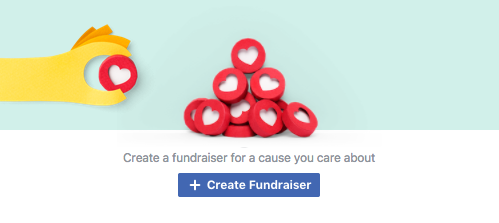


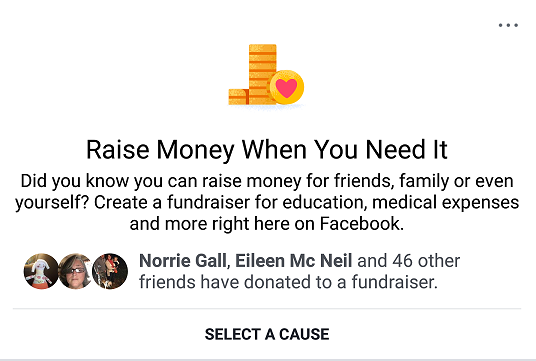

In this vein, Facebook recently announced three new features which are sure to make Facebook Fundraisers more appealing, and more accessible to the masses.
1. Matching Donations
Individuals can now pledge to match donations made to their Facebook Fundraiser in the amount that they choose – from $5 to $2,500.
Data has shown that offering a matching pledge increases donations. This matching pledge feature is now available in the U.S., with plans to roll out internationally in the near future.
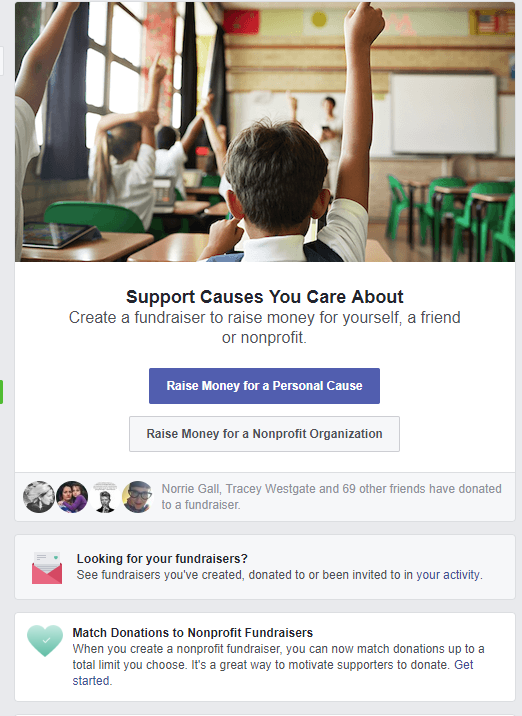
2. More Categories
Facebook has also added more categories for personal causes – ostensibly to compete with GoFundMe and others in the online crowdfunding space. Categories added include:
- Family (ex. Adoption, new baby supplies)
- Faith (ex. Mission trips or community events)
- Travel (ex. Educational trips, travel for medical needs)
- Volunteering (ex. Supplies, volunteer programs)
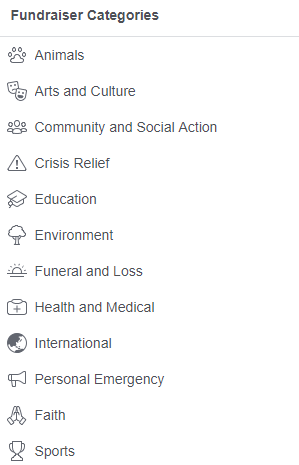
3. No Fees
And the biggest news is that within the coming weeks, Facebook will be eliminating the platform fee on all personal Facebook Fundraisers.
This is huge news for crowdfunding and peer-to-peer. After #GivingTuesday 2017, Facebook got rid of all fees associated with donations made to nonprofits on the platform via Facebook Payments. But, despite widespread criticism, fees were (and, for the moment, still are) still collected on individual, personal Facebook Fundraiser campaigns.
For example, on their website, Facebook says that “For donations made to personal cause fundraisers in the United States, 6.9% + $.30 of the donation goes to payment processing fees, fundraiser vetting and fraud prevention.” In their most recent announcement, Facebook noted that these fees will be going away entirely, but that there “will still be a small fee charged for payment processing and applicable taxes.”
The elimination of fees could prove to be a true game-changer, considering many standard crowdfunding platforms take fees of 5-7%.
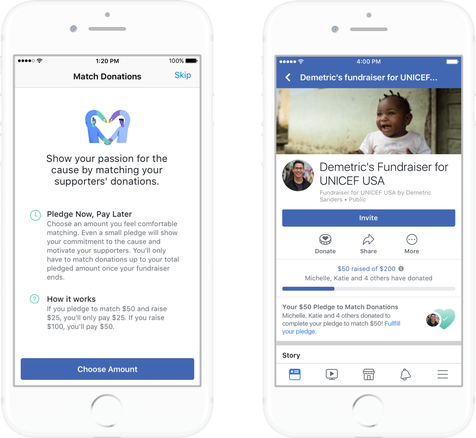
What Does This Mean For Nonprofits?
It’s hard to tell since this is in the early stages, but the ubiquity and popularity of Facebook Fundraisers and Facebook Payments for nonprofits is hard to deny.
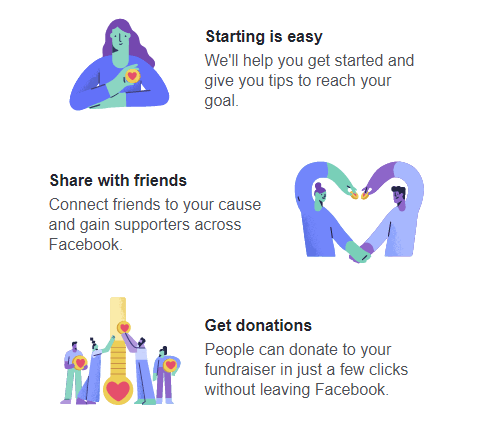
These new changes will only add to the popularity of such tools, and may make Facebook the key space for this type of fundraising moving forward – if it wasn’t already.
Either way, some key changes to consider in your own fundraising process.